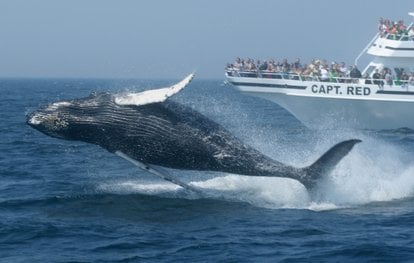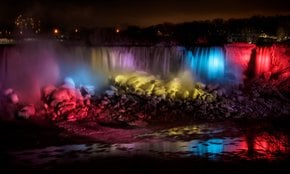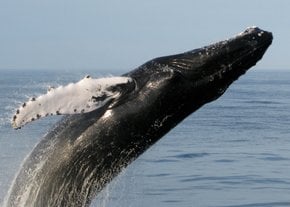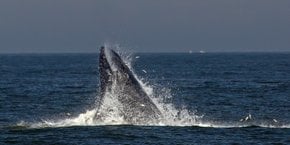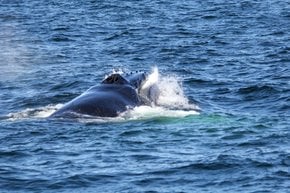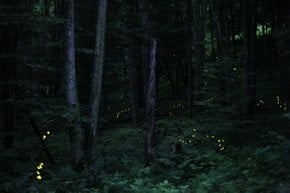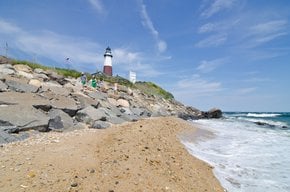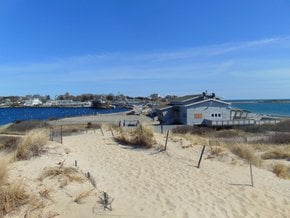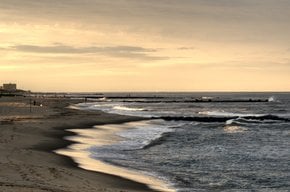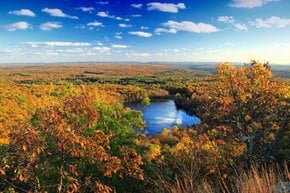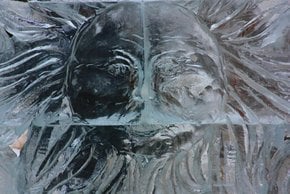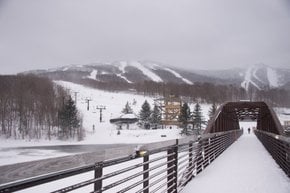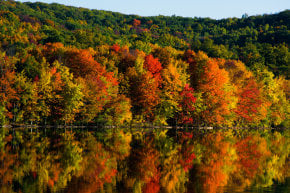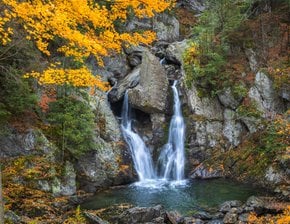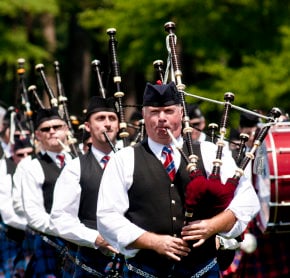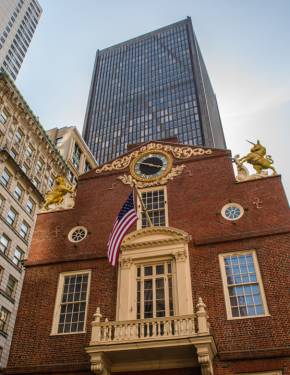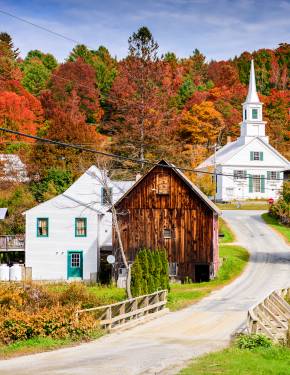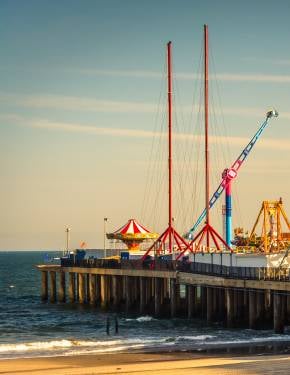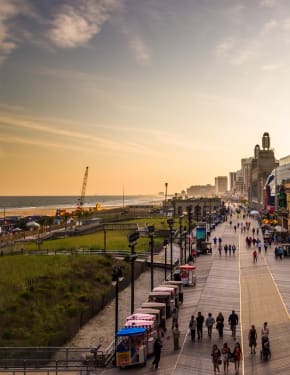Whale Watching in Massachusetts 2026
The Bay State is one of the top-ten whale-watching spots in the world, according to the World Wildlife Fund
Best time: April–October
Massachusetts is a premier whale-watching destination both in the United States and globally. About 40 km (25 mi) off the coast, you can spot pods of humpback, fin, sperm, and pilot whales, with occasional sightings of sei, right, and blue whales. Whales migrate to New England to take advantage of the rich food sources, including mackerel, herring, and krill, found in its waters during the warmer months. They are commonly seen off the coasts of Boston, Cape Cod, and the North Shore. Whale-watching tours typically run from April to October, when the weather is milder, though whales can be spotted as early as mid-March and as late as November.
Where Can You Watch Whales in Massachusetts?
Stellwagen Bank National Marine Sanctuary in Massachusetts Bay is one of the largest feeding grounds for giant sea mammals. This underwater plateau extends 19 miles (31 km) from north to south and is teeming with marine life. Its shallow waters are home to over 100 fish species, including Atlantic cod, bass, bluefin, and yellowfin tuna, and even great white sharks. The sanctuary is a summer hotspot for humpback, finback, minke, pilot, and North Atlantic right whales, as well as dolphins. Covering an area of 842 square miles (2,181 square kilometers), Stellwagen Bank also serves as a nursing ground for several whale species. Tour operators from Boston, Plymouth, and Gloucester bring thousands of visitors to this remarkable site each year. While whale watching from the shore is possible at the tip of Cape Cod, which is just a few miles from Stellwagen Bank, a sea cruise offers a much higher chance of spotting whales.
Whale-Watching Tours
Many whale-watching tours operate out of Boston Harbor, taking tourists to locations about 22 miles (35 km) offshore, including Stellwagen Bank. Large whale-watching catamarans can accommodate up to 400 passengers and travel at speeds of 35 knots (37.5 mph). Tours typically last 3.5 to 4 hours and include amenities such as restrooms and a galley with food and drinks.
The North Shore area and Gloucester
The North Shore area and Gloucester also offer several whale-watching options. For example, some operators provide guaranteed whale-watching tours to Stellwagen Bank. If no whales are seen during your tour, you can repeat the trip for free. The tours are conducted on large vessels with observation decks.
Cape Cod
Cape Cod is a premier whale-watching destination in the U.S., with a high sighting rate of 99%. Major operators in this area include those offering trips on larger boats as well as smaller, more intimate cruises for up to six people. Sunset cruises are also available.
Plymouth
In Plymouth, regular whale-watching excursions depart from Town Wharf, heading to Cape Cod Bay and Stellwagen Bank, where you can see humpback, finback, pilot, and the endangered North Atlantic right whales. Whale-watching tours are often combined with deep-sea fishing expeditions for mackerel, haddock, and cod, usually lasting around 4 hours. Ticket prices typically start at $60.
Whale-Watching Season
Whale-watching season in Massachusetts begins in April and extends through October. During the high season, from June to August, you can enjoy popular tours like sunset cruises. Charter cruises, however, are available from mid-March to November, offering more flexibility for your whale-watching experience.
Humpback Whales
The chance of seeing humpback whales off the Massachusetts coast is over 90%. These whales arrive in New England in March and remain until November, feeding on krill and plankton. With lengths of up to 55 feet (16 meters), humpbacks are a spectacular sight, known for their playful behavior, including leaping out of the water, splashing, and flipping their tails. Each humpback has unique patterns on its flukes, making them easily identifiable.
The Stellwagen Marine Sanctuary monitors a population of about 50 humpback whales, studying their behavior, communication "songs," and migration routes. During winter, humpbacks migrate to warmer waters near the Galapagos Islands in Ecuador.
Fin Whales
Fin whales are also quite common in New England waters. As the second largest animals on Earth, they can reach lengths of up to 85 feet (25 meters). They typically prefer deeper waters and cooler temperatures, making fall months a better time for spotting them. Fin whales are more elusive than humpbacks and tend not to put on a show. Their impressive speed of about 30 mph makes them challenging to glimpse.
Fin whales have distinctive asymmetrical coloring, with body patterns that range from dark gray to light gray and white. The patterns are more pronounced on their right side, while the left side remains dark gray. In winter, fin whales migrate to the Caribbean, the Gulf of Mexico, and the Bahamas.
Minke Whales
The minke whale is one of the smaller whale species, reaching up to 30 feet (9 meters) in length. They are relatively common off the New England coast, appearing on about 75% of whale-watching trips. Minkes are often spotted during rough sea conditions and choppy waves. They can be identified by the distinctive two white stripes on their pectoral fins, known as “minke mittens.”
Right Whales
Right whales are among the world's most endangered sea mammals, making them difficult to spot. The North Atlantic right whale population is estimated at 300 individuals. These whales can live up to 70 years and reach lengths of up to 52 feet (16 meters). They are characterized by their lack of a dorsal fin, a black body, and distinctive white patches on their heads.
Whale-Watching Tips
Whales are spotted on 99% of trips to Stellwagen Bank and Jeffrey’s Ledge off the New England coast. For the best chance of seeing more sea mammals, aim for a day with sunny and clear weather. If you haven’t reserved your tour yet, choosing a day with favorable conditions will enhance your experience. Bringing binoculars or a camera with a telephoto lens can further improve your whale-watching opportunities.
What to Wear
Even if summer weather feels warm onshore, it can get quite chilly and windy once you are 35 km (22 mi) out at sea. For your whale-watching trip, it's advisable to bring a jacket and warm layers. Wear shoes with rubber soles and closed toes, such as sneakers. Don’t forget to pack a hat, sunglasses, and sunscreen. While most boats have a galley with food and beverages, it’s a good idea to bring some water and snacks. Be sure to carry some cash, as credit cards may not always be accepted for onboard purchases.
Where to Stay
To fully immerse yourself in an authentic New England atmosphere, consider staying at one of the region's charming traditional inns, ideally with an ocean or harbor view. Alternatively, spending the night at one of Massachusetts' iconic lighthouses is a unique experience. Options include Wings Neck Lighthouse in Cape Cod, The Lighthouse Inn in West Dennis on the shore of Nantucket Sound, and the historic Bakers Island Lighthouse in Salem, which offers overnight stays from mid-July to September.
Photography Tips
Capturing a picture of a whale requires patience, observation, and quick reflexes. Start by studying the whale's behavior. For example, when feeding, whales often create a frenzy among diving birds—if you spot this, be prepared for a potential lunge or trap feeding moment. Position your focus on the area where the birds are most active, as the whale may surface suddenly.
For action shots, like breaching or tail fluke displays, watch for key signals. A whale arching its back higher than usual often indicates it's about to dive deep, providing a prime opportunity for a tail shot. Breaching can be more unpredictable, but if a whale breaches once, it might do so again, so stay ready.
Lens choice is also important. A wide-angle lens is great for capturing the whale in its vast ocean environment, offering context and scale. For closer action, a lens with a shorter focal length is easier to manage, as it provides a wider field of view, making it easier to track and focus on the whale.

